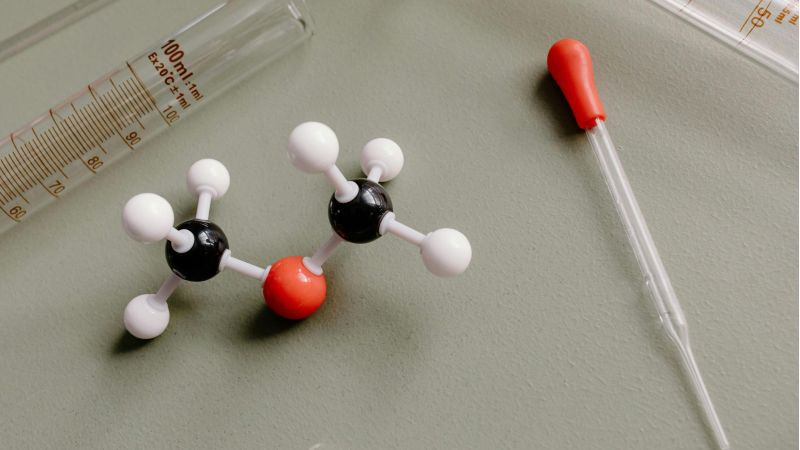
Best NAD+ Supplements for 2024
As we age, our bodies face a critical challenge: declining levels of NAD+, a vital molecule that powers our cells and supports essential biological functions.
While this decline is natural, recent scientific breakthroughs have shown that we can effectively boost our NAD+ levels through supplementation, potentially slowing aspects of the aging process and improving overall health.
The world of NAD+ supplementation can be complex, with various precursors and formulations available on the market. Understanding the differences between these options—from traditional niacin to more advanced molecules—is important for making an informed decision about which supplement might work best for your health goals.
In this article, you will learn:
- The science behind NAD+ and why it’s needed for healthy aging.
- Comprehensive analysis of the different NAD+ supplements and their effectiveness.
- Top NAD+ supplement recommendations for 2024, backed by current research.
- Important considerations for supplementation, including dosage, timing, and potential side effects.
What is NAD+?
Nicotinamide adenine dinucleotide or NAD+ for short is a critical coenzyme present in all living cells. It facilitates hundreds of metabolic processes, most notably cellular nutrition and the regulation of vital molecular functions.
In healthy cells, NAD+ enables energy production through mitochondrial function while supporting DNA repair mechanisms and activating sirtuin proteins—key regulators of cellular health and longevity. However, NAD+ levels decline markedly with age. Research indicates a reduction of up to 50% between young adulthood and middle age.
This progressive decrease in NAD+ is increasingly recognized as a significant factor in aging-related cellular dysfunction. Recent studies highlight the connection between NAD+ levels and multiple aspects of health, including metabolic efficiency, cognitive function, and cellular repair capacity. This growing body of evidence has established NAD+ as a focal point in longevity research and therapeutic development.
Types of NAD+ Supplements
The body’s NAD+ levels can be naturally increased through targeted supplementation of the various precursors of NAD+. These molecular building blocks activate our cellular machinery through different pathways to increase natural production of this essential coenzyme more or less effectively.
Nicotinic Acid (NA) / Niacin
Nicotinic acid (NA), also known as niacin or vitamin B3, is an essential nutrient that plays a crucial role in cellular metabolism. As a precursor to NAD+, it’s one of the most well-studied and widely used supplements for boosting NAD+ levels. Niacin is found naturally in many foods, including meat, fish, and fortified grains, and has been used for decades to treat high cholesterol and other cardiovascular conditions.
Nicotinic acid increases NAD+ levels through the Preiss-Handler pathway1. Once ingested, NA is converted to nicotinic acid mononucleotide (NAMN) by the enzyme nicotinic acid phosphoribosyltransferase (NAPRT). NAMN is then transformed into nicotinic acid adenine dinucleotide (NAAD) and finally into NAD+. This pathway is particularly efficient in the liver, which can produce NAD+ from niacin and distribute it to other tissues.
Despite its effectiveness, nicotinic acid has some notable drawbacks. The most common side effect is “niacin flush,” a temporary but often uncomfortable skin reaction characterized by redness, warmth, and itching. High doses of niacin can also cause more serious side effects, including liver damage, glucose intolerance, and increased risk of diabetes. Recent research has also raised concerns about a potential link between excess niacin intake and an increased risk of cardiovascular events2, suggesting that long-term, high-dose niacin supplementation may not be as safe as previously thought. Niacin’s effectiveness can also vary among individuals, as some people may lack the necessary enzymes to efficiently convert it to NAD+3.
Nicotinamide (NAM) / Niacinamide
Nicotinamide (NAM), also known as niacinamide, is another form of vitamin B3 and a direct precursor to NAD+. It’s naturally found in foods like fish, poultry, nuts, and legumes, and is also available as a dietary supplement. NAM plays a crucial role in cellular energy production, DNA repair, and various metabolic processes. Unlike niacin, another form of vitamin B3, NAM doesn’t cause skin flushing, making it a more tolerable option for many people.
NAM increases NAD+ levels through the salvage pathway4, a recycling process that’s more energy-efficient than creating NAD+ from scratch. In this pathway, NAM is converted to nicotinamide mononucleotide (NMN) by the enzyme nicotinamide phosphoribosyltransferase (NAMPT). NMN is then transformed into NAD+ by nicotinamide mononucleotide adenylyltransferases (NMNATs). This process requires less ATP compared to other NAD+ synthesis routes, making it a preferred method for cells to maintain their NAD+ levels.
The benefits of NAM supplementation are wide-ranging. It has shown promise in improving skin health by reducing inflammation, hyperpigmentation, and signs of aging. NAM may also help protect against certain types of skin cancer.
While NAM is generally well-tolerated, high doses may have some drawbacks. At very high concentrations, NAM can inhibit certain NAD+-consuming enzymes like sirtuins and PARPs, potentially counteracting some of the benefits of increased NAD+ levels5. However, it is unlikely to find these high dosages in most available NAM supplements.
Nicotinamide Riboside (NR)
Discovered relatively recently, nicotinamide riboside (NR) is a unique molecule that serves as a direct precursor to NAD+. Its structure consists of a ribose sugar bound to nicotinamide, allowing it to be readily absorbed and utilized by cells throughout the body. NR’s potential to boost NAD+ levels more efficiently than other precursors has made it a subject of intense scientific study and a popular choice among health enthusiasts seeking to optimize their cellular function and overall well-being.
NR increases NAD+ levels through a distinct pathway that bypasses some of the typical conversion steps required by other precursors6. Once absorbed, NR is phosphorylated by enzymes called NR kinases (NRKs) to form nicotinamide mononucleotide (NMN). This NMN is then quickly converted to NAD+ by the enzyme nicotinamide mononucleotide adenylyltransferase (NMNAT). This efficient process allows NR to rapidly elevate NAD+ levels in various tissues, including those that may have difficulty utilizing other precursors due to age-related decline in certain enzymes.
The benefits of NR supplementation are wide-ranging and supported by numerous studies. Research has shown that NR can improve mitochondrial function, enhance cellular energy production, and protect against age-related cognitive decline. It has demonstrated potential in supporting cardiovascular health, promoting healthy aging of muscles and bones, and improving metabolic function. Some studies suggest that NR may also help in managing weight, reducing the risk of certain age-related diseases, and enhancing overall cellular repair mechanisms.
Nicotinamide Mononucleotide (NMN)
Nicotinamide mononucleotide (NMN) is a nucleotide composed of nicotinamide, ribose, and a phosphate group. NMN is found in various foods, including edamame, broccoli, and avocado, albeit in small quantities. As we age, our bodies’ ability to produce NMN diminishes, which has led researchers to investigate its potential as a supplement for promoting healthy aging and longevity.
NMN increases NAD+ levels by serving as a direct precursor in the NAD+ biosynthesis pathway. Once ingested, NMN is rapidly absorbed and converted to NAD+ through the action of the enzyme nicotinamide mononucleotide adenylyltransferase (NMNAT)7. This process bypasses several steps in the NAD+ salvage pathway, potentially making NMN a more efficient NAD+ precursor compared to other supplements. Additionally, recent research has identified a specific NMN transporter called Slc12a8, which is highly expressed in the small intestine and may facilitate the direct uptake of NMN into cells8.
The numerous benefits of NMN supplements include improved insulin sensitivity and glucose tolerance, enhanced mitochondrial function, increased endurance and muscle strength, and better cognitive function. In humans, early clinical trials have demonstrated promising results, such as improved muscle insulin sensitivity in prediabetic women and increased aerobic capacity in amateur runners9. NMN has also shown potential in mitigating age-related disorders like oxidative stress, DNA damage, and inflammatory responses.
Dihydronicotinamide Riboside (NRH)
Dihydronicotinamide Riboside (NRH) is a potent, recently discovered compound that has gained quite a bit of attention in the field of cellular metabolism. Unlike its oxidized counterpart nicotinamide riboside (NR), NRH exists in a reduced state, making it a unique and highly efficient molecule for increasing intracellular NAD+ levels. Studies have shown the compound’s ability to rapidly increase NAD+ concentrations by 2.5 to 10-fold over control values within just one hour of administration to mammalian cells10.
NRH operates through a distinct pathway to synthesize NAD+, setting it apart from other precursors. Upon entering the cell, NRH is first converted to NADH by enzymes such as nicotinamide riboside kinase (NRK) or adenosine kinase11. This NADH is then rapidly oxidized to NAD+ by the cell’s metabolic machinery. The efficiency of this process is attributed to NRH’s ability to bypass certain rate-limiting steps in NAD+ biosynthesis.
Studies have shown that NRH can significantly enhance the NAD+/NADH ratio in cells without inducing apoptotic markers or causing substantial increases in lactate levels. However, NRH is not without its limitations and potential drawbacks. Recent research has indicated that NRH supplementation can activate a pro-inflammatory phenotype in resting macrophages, potentially promoting inflammation under certain conditions12.
Nicotinic Acid Riboside (NAR)
Nicotinic Acid Riboside (NAR) is a lesser-known cousin in the family of NAD+ precursors. This molecule is structurally similar to nicotinamide riboside (NR) but with a key difference – it contains a carboxylic acid group instead of an amide group. NAR occurs naturally in some foods and can be synthesized in the body, albeit in small quantities. Its unique chemical structure allows it to participate in NAD+ biosynthesis through a distinct pathway, potentially offering complementary benefits to other precursors.
NAR increases NAD+ levels through the Preiss-Handler pathway. Once inside the cell, NAR is first converted to nicotinic acid mononucleotide (NAMN) by the enzyme nicotinamide riboside kinase (NRK). NAMN is then transformed into nicotinic acid adenine dinucleotide (NAAD) by nicotinamide mononucleotide adenylyltransferase (NMNAT). Finally, NAD synthetase converts NAAD to NAD+.
Research on NAR is less extensive compared to more popular precursors like NR or NMN, making its long-term effects and optimal dosing less well-understood. The conversion of NAR to NAD+ involves more steps than some other precursors, which could potentially limit its efficiency in certain scenarios. Furthermore, the body’s capacity to utilize NAR might vary among individuals, potentially leading to inconsistent results.
Tryptophan
Tryptophan is an essential amino acid that plays a crucial role in various biological processes, including protein synthesis and neurotransmitter production. It’s found naturally in many protein-rich foods and is also available as a dietary supplement. In the context of NAD+ metabolism, tryptophan serves as a NAD+ precursor.
The conversion of tryptophan to NAD+ occurs through the kynurenine pathway, a multi-step process that ultimately leads to the production of quinolinic acid, which is then converted to nicotinic acid mononucleotide (NAMN)13. NAMN is further transformed into NAD+ through a series of enzymatic reactions. This pathway, while less efficient than other NAD+ precursors, may still contribute to maintaining NAD+ levels in the body.
Best NAD+ Supplement to Try in 2024
Research has consistently shown that the most effective NAD+ precursors are NMN (Nicotinamide Mononucleotide), Nicotinamide, and Nicotinamide Riboside. These compounds have demonstrated the greatest potential for boosting intracellular NAD+ levels, which is crucial for cellular energy production and overall health.
While single-ingredient supplements like pure NAD+ powder can be effective, the most potent NAD+ supplements tend to be blends of multiple precursors. This approach allows for NAD+ boosting through various metabolic pathways, leading to more comprehensive and efficient results.
One standout product in this category is the Vitality ↑® NAD+ Booster. This NAD+ supplement combines a scientifically formulated blend of NMN, Nicotinamide, and D-Ribose, which work synergistically to enhance intracellular NAD+ levels more effectively than single-ingredient alternatives14. The addition of Creatine in the formula further supports cellular energy production by increasing ATP levels, complementing the NAD+-boosting effects of the other ingredients.
A clinical trial evaluating Vitality ↑® NAD+ Booster involved 26 participants aged 35-65 who received daily supplementation of 2000mg. Intracellular NAD measurements were taken at four points: two baseline readings 1-2 weeks apart, followed by measurements at 2 and 4 weeks after beginning supplementation. The results were largely positive, with 22 participants (85%) achieving optimized NAD levels by week 4, and two additional subjects approaching optimum levels, requiring only slight dosage adjustments to reach optimization. While one participant showed modest improvement and another showed no change, the overall results were significant, with average NAD levels doubling across the study population.

Vitality ↑® NAD+ Booster‘s unique formulation addresses multiple aspects of cellular energy metabolism, making it a top choice for those looking to optimize their NAD+ levels in 2024. By leveraging the combined power of these proven precursors and energy-supporting compounds, this supplement offers a comprehensive approach to enhancing cellular health and vitality.
Benefits of NAD+ Supplements
Here’s what the current science tells us about the benefits of NAD+ supplements and why they are capturing the attention of researchers worldwide.
Anti-Aging Effects
NAD+ levels naturally decline with age, and supplementation may help slow down certain aspects of the aging process by addressing NAD deficiency and its symptoms. Through its support for cellular energy production and DNA repair mechanisms, NAD+ offers potential benefits for aging:
- Improved mitochondrial function15
- Enhanced cellular metabolism16
- Activated sirtuins, which are proteins associated with longevity
Support for Cognitive Function
NAD+ supplementation may offer neuroprotective benefits and support overall brain health. These potential cognitive benefits include:
- Improved memory and learning abilities17
- Enhanced concentration and mental clarity18
- Reduced risk of age-related cognitive decline19
Increased Levels of Energy
Since NAD+ plays an unmistakable role in cellular energy production, supplementation may help increase overall energy levels and lead to:
- Reduced fatigue and exhaustion20
- Improved physical performance and endurance21
- Faster recovery from jet lag22
Metabolic Health
NAD+ is involved in various metabolic processes, and high-quality supplements work to support:
- More efficient fat metabolism23
- Assistance with weight management when combined with diet and exercise24
- Potential improvements in insulin sensitivity25
Management of Chronic Pain
NAD+ supplementation may help manage chronic pain by:
- Reducing inflammation26
- Modulating pain signaling pathways27
- Offering a non-addictive alternative to traditional pain medications
Regulation of Mood Disorders
Some studies indicate that NAD+ may have positive effects on mood disorders by:
- Boosting serotonin levels28
- Reducing symptoms of anxiety and depression
- Promoting overall emotional well-being
Potential Side Effects of NAD+ Supplements
NAD+ supplements and precursors are generally well-tolerated by most individuals. However, as with any supplement, some people may experience mild side effects.
The most frequently reported side effects of NAD+ supplements are typically mild and may include:
- Nausea
- Fatigue
- Headaches
- Diarrhea
- Stomach discomfort
- Flushing (particularly with niacin)
These effects are usually temporary and often subside as the body adjusts to the supplement.
NAD+ supplements may interact with certain medications. For example, they might enhance the effects of blood pressure medications, potentially leading to excessively low blood pressure. As always, it is wise to consult with a healthcare provider before starting any new supplement regimen, especially if you are on medications.
Certain groups should exercise caution or avoid NAD+ supplements altogether:
- Pregnant or breastfeeding women: Due to limited research on safety in these populations
- Individuals with liver or kidney problems: As these organs are involved in processing supplements
- People with a history of gout: Certain NAD+ precursors may increase uric acid levels
NAD+ Supplements FAQ
What is the difference between NAD and NAD+ supplements?
NAD+ specifically denotes the oxidized form of NAD, while NAD alone is a general term. Both names are used interchangeably in the supplement market. The important thing is choosing a supplement that can effectively increase NAD levels in your body, such as precursors like NMN, NAM or NR, since NAD/NAD+ itself has very poor bioavailability when taken orally.
What is the most effective way to take NAD+?
While directly supplementing with NAD+ might seem like the most straightforward approach, our bodies actually prefer a more nuanced strategy. The key lies in the molecule’s size and complexity, as NAD+ itself is too large to efficiently cross cell membranes or survive the harsh journey through our digestive system.
Cells have specific transporters and enzymes designed to take up and process NAD+ precursors. These uptake and conversion mechanisms are more efficient than trying to transport intact NAD+ molecules across cell membranes.
Direct NAD+ supplementation might even potentially suppress the body’s own NAD+ production through negative feedback mechanisms. Precursors, on the other hand, work by enhancing the body’s natural production pathways.
What is the optimal NAD+ dosage for absorption?
The optimal dosage of NAD precursors varies between individuals, making personalized testing crucial for determining the right amount for you. We strongly recommend getting an intracellular NAD test, which helps determine:
- Your baseline NAD levels without supplementation
- Whether your current supplement type and dosage are effectively increasing your NAD to optimal ranges
- If you’re taking too much supplement, as excessive NAD levels may be detrimental
While testing both before and after starting supplementation is ideal, post-supplementation testing is essential for ensuring you’re achieving optimal results safely. This personalized approach helps avoid both insufficient dosing and potential overconsumption.
Can I take NAD+ every day?
NAD+ precursors can generally be taken daily, as demonstrated in clinical studies using daily dosing protocols. However, optimal dosing may vary between individuals as outlined in the previous answer. While these supplements are well-tolerated, taking breaks periodically (e.g., 5 days on, 2 days off) may help prevent tolerance and maintain effectiveness. Monitor how you feel and test your NAD levels to determine your ideal dosing schedule.
Verdict: What’s the Best Supplement to Boost NAD Levels?
After a thorough analysis of the current research and available products, the most effective approach to NAD+ supplementation appears to be using a combination of precursors rather than relying on a single compound. Here’s our breakdown of the best options:
Top Picks for 2024
Best Overall: Combination Formulas
- Products containing multiple precursors (like NMN + Nicotinamide)
- Offer comprehensive pathway activation
- Enhanced bioavailability through synergistic effects
- Vitality ↑® NAD+ Booster ticks all these boxes
Best Single-Ingredient Options
- NMN: For those focused on longevity and metabolic health
- Nicotinamide Riboside: For better absorption and minimal side effects
- Nicotinamide: For cost-effective NAD+ support
Final Recommendations
Before starting any NAD+ supplementation regimen, it’s essential to establish your baseline levels through testing and monitor them periodically to optimize your dosing strategy. Your specific goals should guide your supplement choice – consider NMN or combination formulas for anti-aging purposes, blends with energy-supporting compounds like Creatine for athletic performance, or basic supplementation for general health maintenance.
For implementation, start with a lower dose and gradually increase it while maintaining consistent usage. Some may benefit from a cycling protocol of five days on and two days off to maximize effectiveness. Regular testing will help you adjust your supplementation strategy to achieve optimal results.
Referenced Sources:
- https://www.jlr.org/article/S0022-2275(20)32586-4/fulltext ↩︎
- https://www.nih.gov/news-events/nih-research-matters/how-excess-niacin-may-promote-cardiovascular-disease ↩︎
- https://www.mdpi.com/2075-1729/14/3/413 ↩︎
- https://pmc.ncbi.nlm.nih.gov/articles/PMC8612620/ ↩︎
- https://pmc.ncbi.nlm.nih.gov/articles/PMC7277745/ ↩︎
- https://pmc.ncbi.nlm.nih.gov/articles/PMC7352172/ ↩︎
- https://www.frontiersin.org/journals/cell-and-developmental-biology/articles/10.3389/fcell.2020.00246/full ↩︎
- https://pmc.ncbi.nlm.nih.gov/articles/PMC6530925/ ↩︎
- https://www.nature.com/articles/s41514-022-00084-z ↩︎
- https://pmc.ncbi.nlm.nih.gov/articles/PMC6556581/ ↩︎
- https://www.frontiersin.org/journals/immunology/articles/10.3389/fimmu.2022.840246/full ↩︎
- https://mayoclinic.elsevierpure.com/en/publications/dihydronicotinamide-riboside-is-a-potent-nadsupsup-precursor-prom ↩︎
- https://www.frontiersin.org/journals/medicine/articles/10.3389/fmed.2024.1379335/full ↩︎
- https://www.mdpi.com/2072-6643/14/11/2219 ↩︎
- https://pubmed.ncbi.nlm.nih.gov/25308486/ ↩︎
- https://pmc.ncbi.nlm.nih.gov/articles/PMC7973386/ ↩︎
- https://pmc.ncbi.nlm.nih.gov/articles/PMC9370773/ ↩︎
- https://pmc.ncbi.nlm.nih.gov/articles/PMC8444613/ ↩︎
- https://pmc.ncbi.nlm.nih.gov/articles/PMC7442590/ ↩︎
- https://pmc.ncbi.nlm.nih.gov/articles/PMC9116917/ ↩︎
- https://pmc.ncbi.nlm.nih.gov/articles/PMC9734213/ ↩︎
- https://www.sciencedirect.com/science/article/abs/pii/S0014299920302508 ↩︎
- https://www.tandfonline.com/doi/full/10.1080/21623945.2024.2313297 ↩︎
- https://pmc.ncbi.nlm.nih.gov/articles/PMC10579603/ ↩︎
- https://pmc.ncbi.nlm.nih.gov/articles/PMC7610120/ ↩︎
- https://pmc.ncbi.nlm.nih.gov/articles/PMC9194293/ ↩︎
- https://www.sciencedirect.com/science/article/pii/S0197018622001607 ↩︎
- https://pmc.ncbi.nlm.nih.gov/articles/PMC6787556/ ↩︎
Read More














